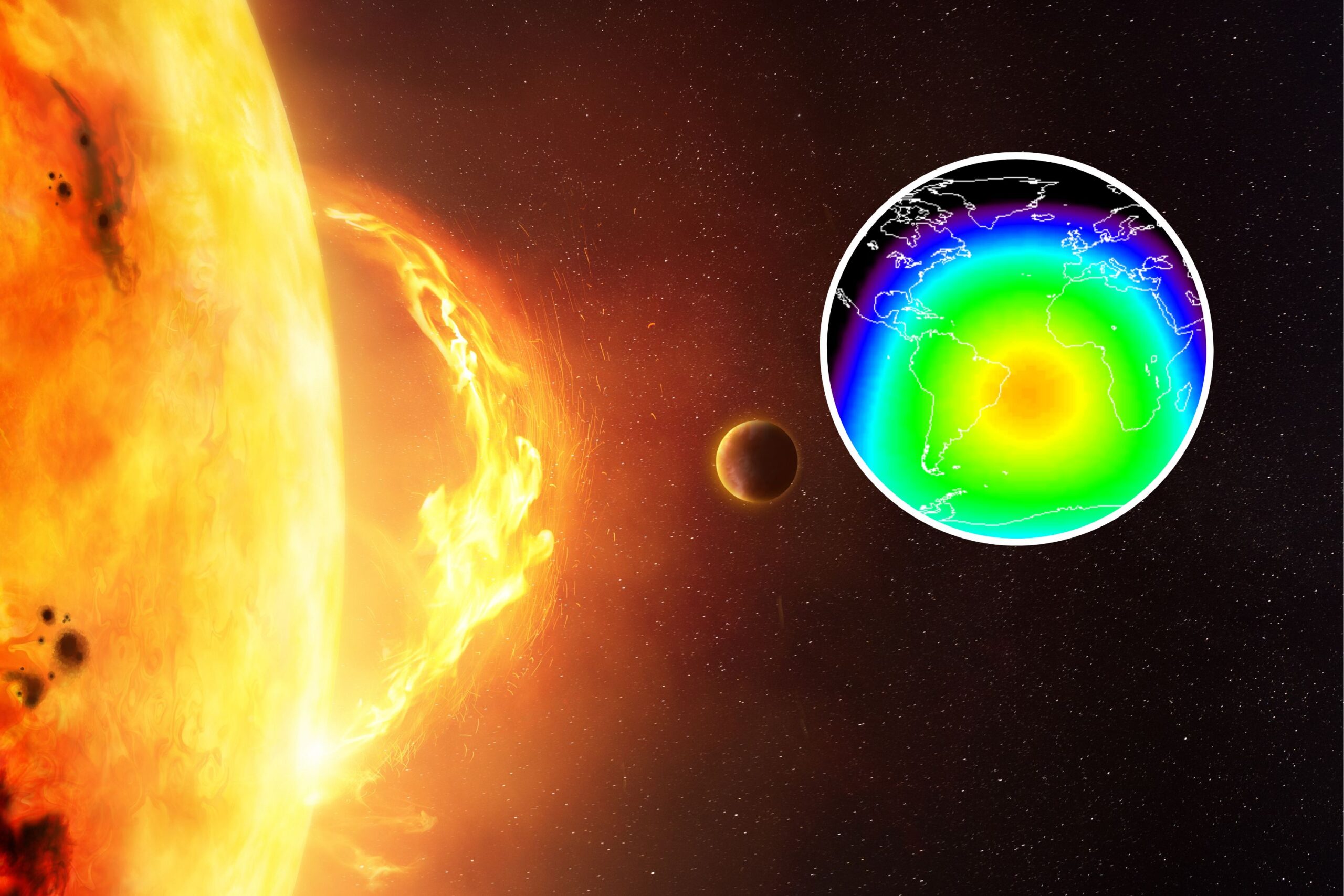
A sunspot currently roiling on the side of the sun is slowly turning to face toward our planet, possibly putting us in the firing line for solar flares and subsequent radio blackouts.
The sun fired out nine M-class solar flares on Monday, many of which originated from this active sunspot, named AR3901.
None of these flares headed towards the Earth, but the sunspot could release more flares when it is facing our way, possibly triggering radio blackouts.
“Solar flare activity has remained at high levels with ten M-Class, R1 (Minor) level flares over the period. Much of the activity has stemmed from Region 3901 (S07E63, Dai/beta-gamma) which remains difficult to analyze due to foreshortening near the east limb,” NOAA’s Space Weather Prediction Center (SWPC) said in a forecast discussion.
ISTOCK / GETTY IMAGES PLUS / NOAA Space Weather Prediction Center
“The region was responsible for the largest flare of the period, an M3.7 at 18/1253 UTC as well as a long duration M2.0 at 18/1915 UTC and ending at 18/1948 UTC.”
The SWPC predicts that on Tuesday there is a 55 percent chance of M-class flares and a 10 percent chance of X-class flares, while on November 20 and 21, there is a 60 percent chance of M-class and 15 percent chance of X-class flares.
“R1-R2 (Minor-Moderate) radio blackouts are likely for the outlook period [November 18-24],” it said in an Advisory Outlook.
Solar flares are sudden, intense bursts of radiation from the sun’s atmosphere caused by the release of magnetic energy. These flares are some of the most violent events in our solar system and can release energy equivalent to millions of hydrogen bombs.
The seasons of the Sun 🌿☀️🍂❄️
Just as Earth has seasons, our Sun moves from times of frequent eruptions to stretches of relative quiescence. It’s all part of the roughly 11-year solar cycle.
Learn more in this new installment of NASA’s Illuminate series! 👇 pic.twitter.com/NgM0JK6xRx
— NASA Sun & Space (@NASASun) November 8, 2024
While solar flares don’t physically harm Earth’s surface due to our atmosphere, they can cause radio blackouts, as well as disrupt satellite communications and interfere with GPS systems.
“The radio blackouts are caused by disruption of the ionosphere by high energy radiation generated by the solar flare. The ionosphere is a layer of the Earth’s atmosphere situated between 53 to 373 miles above the Earth’s surface,” David Wallace, an assistant professor of electrical engineering at Mississippi State University, told Newsweek.
“Radio waves are skipped off the ionosphere allowing them to be broadcasted around the world. During times of strong solar flare activity, the high energy radiation from the flares interacts with the atoms in the ionosphere, stripping off electrons from the atoms and creating an area with a high density of free electrons in the lower ionosphere. When the high-frequency radio waves make contact with the high-density areas of free electrons, the waves are absorbed, instead of being reflected. This causes the radio blackouts.”
Depending on the strength of the flare, these blackouts can last between a few minutes to several hours. Solar flares are categorized into five classes based on their X-ray intensity, ranging between A, B, C, M, and X. X-class flares are the most powerful and least common, with only 175 X-class flares being seen per 11-year solar cycle.
“It is believed that the most significant solar storm event happened in 1859 and is generally referred to as ‘The Carrington Event.’ Back then we didn’t have critical digital infrastructure, similar to what we have today,” Rami Qahwaji, a visual computing professor and space weather researcher at the University of Bradford in the U.K., previously told Newsweek.
“But an event similar to the Carrington Event happening today could result in between $0.6 and $2.6 trillion in damages to the U.S. alone, according to NASA spaceflight.”
Do you have a tip on a science story that Newsweek should be covering? Do you have a question about solar flares? Let us know via science@newsweek.com.
